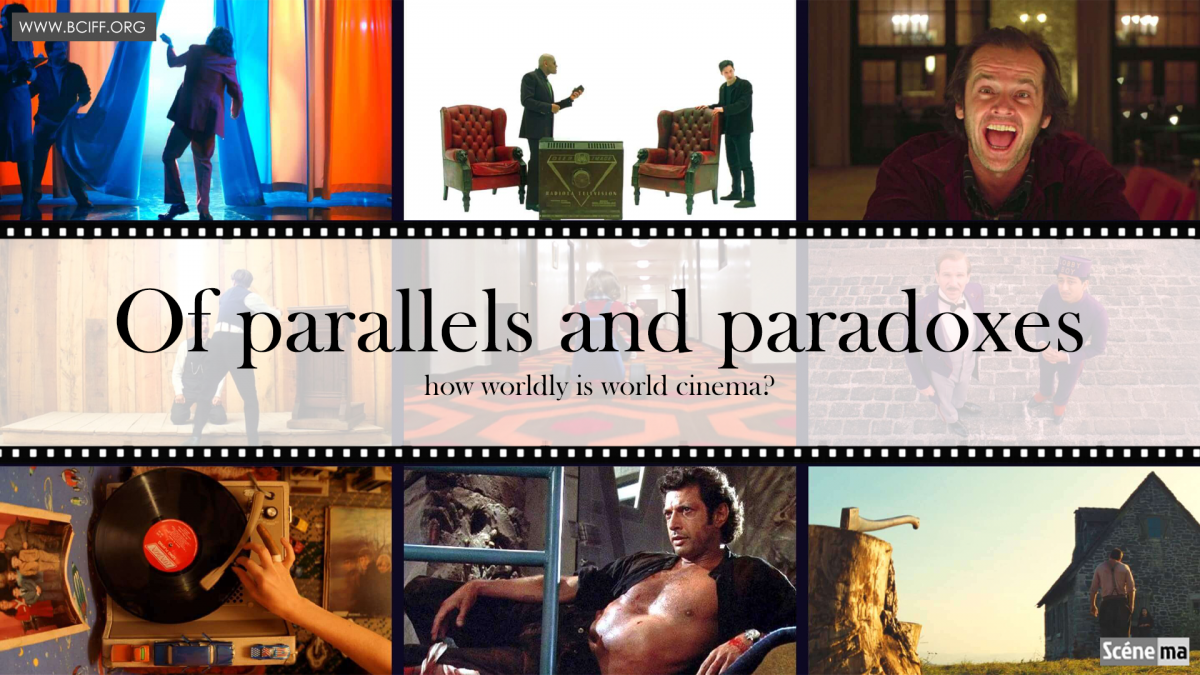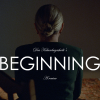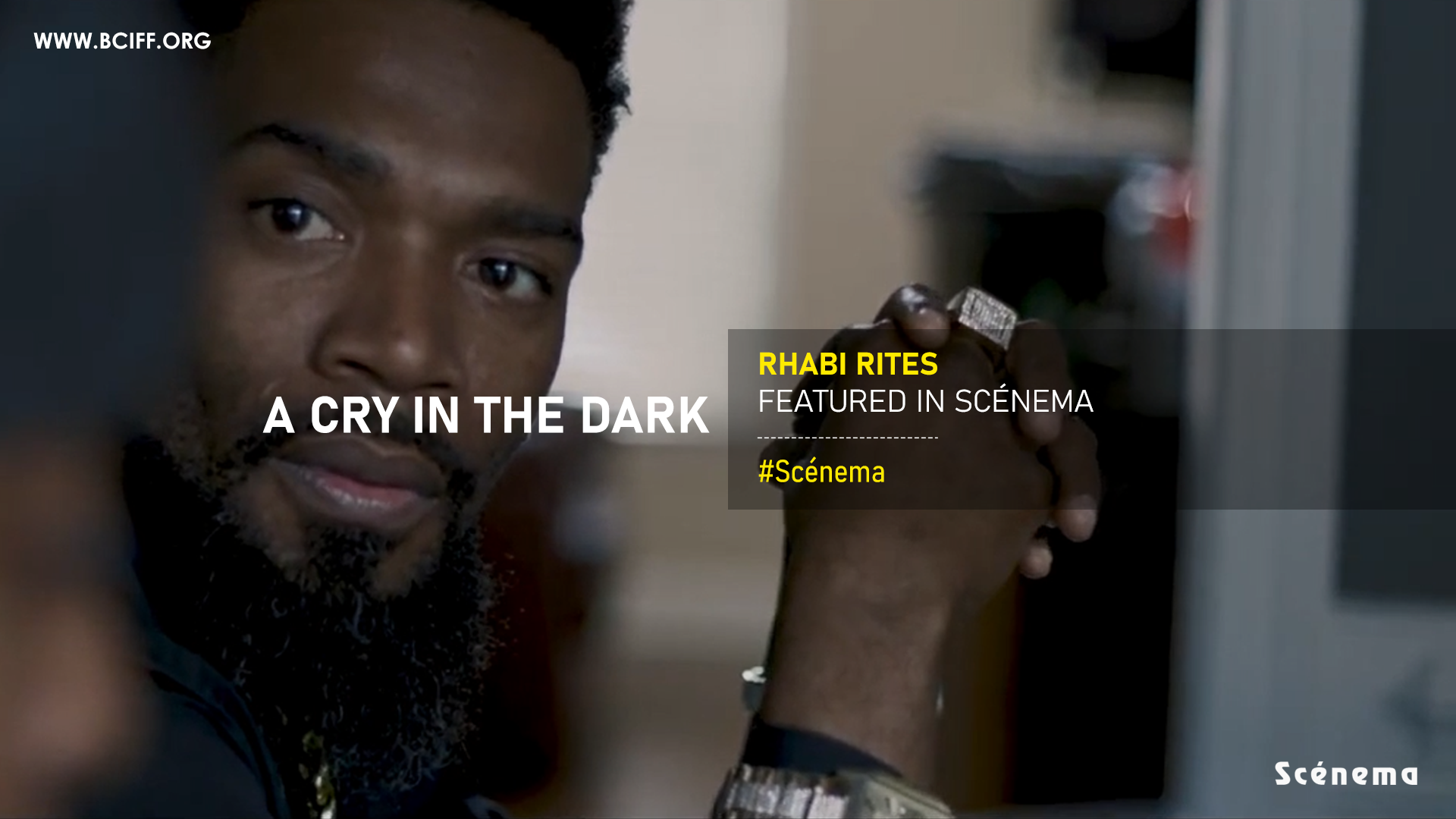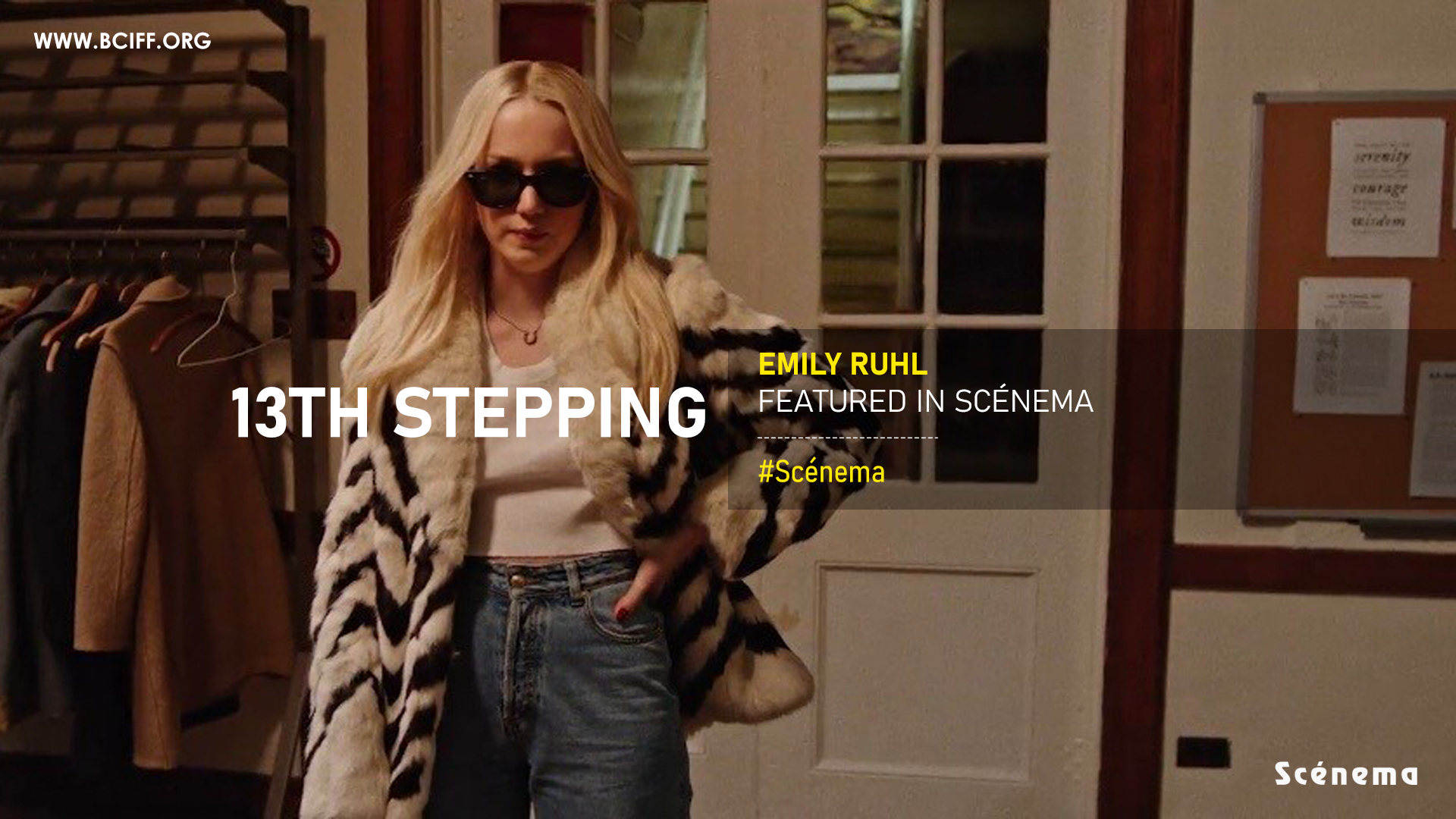“Life is not a series of gig lamps symmetrically arranged; life is a luminous halo, a semi-transparent envelope surrounding us from the beginning of consciousness to the end.” Virginia Woolf
World cinema is an interesting domain. If carefully examined, the domain offers a number of contradictions. A deeper understanding of the word ‘world’ would clarify a number of obscure concepts. There are a couple of ideas that can be associated with the word ‘ worldly ‘ like sophisticated or experienced and terrestrial. These ideas dexterously fuse into each other. Alain Badiou believes the world of cinema is a heterogeneous mixture of intertwined ideas. A synthesis of the elevated and the primeval.
 A profound understanding of cinema can only be reached by the perpetual process of constructing and deconstructing the very structure of it, the break of dawn must liberate the darker colors, the story must reveal it’s own contradiction. A young woman in Asghar Farhadi’s ‘Fireworks Wednesday’ experiences a moment of epiphany, a realization that decimates the structure of loyalty. Yet there is a celebration (an occasion when the local inhabitants burst crackers to celebrate a particular festival) all around Iran, an immanent exaltation, turning the whole situation into a tragedy belonging to both worlds.
A profound understanding of cinema can only be reached by the perpetual process of constructing and deconstructing the very structure of it, the break of dawn must liberate the darker colors, the story must reveal it’s own contradiction. A young woman in Asghar Farhadi’s ‘Fireworks Wednesday’ experiences a moment of epiphany, a realization that decimates the structure of loyalty. Yet there is a celebration (an occasion when the local inhabitants burst crackers to celebrate a particular festival) all around Iran, an immanent exaltation, turning the whole situation into a tragedy belonging to both worlds.
 In Andréi Tarkovsky’s ‘Stalker’ the Zone is a contaminated area as well as a symbol of the corrupted heart of mankind, a perfect message about modernization and dehumanization. In ‘Solaris’ the universe of Physics and Mathematics, of equations and inferences, only love and affection shall complete the void troubling mankind. Marguerite Duras’ ‘Baxter, Vera Baxter’ demolishes the fragile world of imagination in the face of the reality of indifference while one can hear music in the background so consistently symmetric, relentless, and certain. The elusive nature of balance makes the life of a director or a storyteller almost unbearable. Kamal Swaroop’s ‘ Om Dar B Dar ‘ portrays balance in the most intriguing fashion. A conclave where reason must have a healthy debate with faith. In ‘Capernaum’ the little boy the protagonist takes care of for a short span of time turns his angst into relief, he finds a purpose, not as sterile as suing his parents. The protagonist’s purpose though justified finds profundity in the careless whims of a little boy.
In Andréi Tarkovsky’s ‘Stalker’ the Zone is a contaminated area as well as a symbol of the corrupted heart of mankind, a perfect message about modernization and dehumanization. In ‘Solaris’ the universe of Physics and Mathematics, of equations and inferences, only love and affection shall complete the void troubling mankind. Marguerite Duras’ ‘Baxter, Vera Baxter’ demolishes the fragile world of imagination in the face of the reality of indifference while one can hear music in the background so consistently symmetric, relentless, and certain. The elusive nature of balance makes the life of a director or a storyteller almost unbearable. Kamal Swaroop’s ‘ Om Dar B Dar ‘ portrays balance in the most intriguing fashion. A conclave where reason must have a healthy debate with faith. In ‘Capernaum’ the little boy the protagonist takes care of for a short span of time turns his angst into relief, he finds a purpose, not as sterile as suing his parents. The protagonist’s purpose though justified finds profundity in the careless whims of a little boy.
 In Rosselini’s ‘Germany Year Zero’ the recurrent epiphanies of Edmund was juxtaposed against the cultural decay of Germany. A decaying consciousness is in ruins both internal and external at the same point of time. ‘City of God’ – many believe is a tale of friendship and vengeance in the violent landscape of Brazil, where love results in the demise of one and vengeance in the death of another – a balanced plummet. The ‘Rashomon Effect’ of Akutagawa/Kurosawa, the uncertainty of a number of varying narratives must find solace in the certainty of rain, nature’s harrowing lack of magnanimity. Satyajit Ray’s ‘Pather Panchali’ never looks beyond the agony of a poor family. Yet the ephemeral nuances of a train, a pond, the Kans grass makes one believe, they will live happily one day. Godard’s ‘Pierrot Le Fou’ exposes the gap between the persona and the person. The protagonist wants to read Joyce unrattled by the plight of his lover. Uncle Boonmee is on his deathbed when he experiences an otherworldly life both aesthetically fascinating and full of metaphysical metaphors. The same is the case with ‘Jonaki’ by Aditya Vikram Sengupta. Regret often veiled itself in the domain of fantasy, the world of could have beens. In all these cases we find elements both otherworldly (abstract) and humane (tangible). These elements often changed places. We find total unrestrained representation in cinema. Knowledge of one’s true plight however distant finds a place in the spacious drawing room of an individual.
In Rosselini’s ‘Germany Year Zero’ the recurrent epiphanies of Edmund was juxtaposed against the cultural decay of Germany. A decaying consciousness is in ruins both internal and external at the same point of time. ‘City of God’ – many believe is a tale of friendship and vengeance in the violent landscape of Brazil, where love results in the demise of one and vengeance in the death of another – a balanced plummet. The ‘Rashomon Effect’ of Akutagawa/Kurosawa, the uncertainty of a number of varying narratives must find solace in the certainty of rain, nature’s harrowing lack of magnanimity. Satyajit Ray’s ‘Pather Panchali’ never looks beyond the agony of a poor family. Yet the ephemeral nuances of a train, a pond, the Kans grass makes one believe, they will live happily one day. Godard’s ‘Pierrot Le Fou’ exposes the gap between the persona and the person. The protagonist wants to read Joyce unrattled by the plight of his lover. Uncle Boonmee is on his deathbed when he experiences an otherworldly life both aesthetically fascinating and full of metaphysical metaphors. The same is the case with ‘Jonaki’ by Aditya Vikram Sengupta. Regret often veiled itself in the domain of fantasy, the world of could have beens. In all these cases we find elements both otherworldly (abstract) and humane (tangible). These elements often changed places. We find total unrestrained representation in cinema. Knowledge of one’s true plight however distant finds a place in the spacious drawing room of an individual.
 World cinema is otherworldly in the authenticity of experience promised by a flying monk in Paulo Sorrentino’s ‘Youth’ or a flying girl in Denis Cote’s ‘Ghost Town Anthology’. The same experience however makes one more empathetic to the collective agony of the world, makes one dance in the glee of a boy finding freedom from the confines of society in Truffaut’s ‘400 Blows’. An interesting revelation can be spotted in Yasujiro Ozu’s ‘Tokyo Story’. The director deliberately tries to take the audience as authoritative voyeurs away from the intimate conversations of a family to the revolutionary usage of frames and elliptical storytelling. Bresson’s minimalism does the opposite. In ‘Mouchette’ the focus is fixated on an individual and her experiences. The same is the case with ‘A man Escaped’ and ‘The Diary of a country priest’. The narratives of Bergman followed the narrative pattern of Virginia Woolf. The fusion of the physical with the metaphysical, the audible, and the visible. In ‘Wild Strawberries’ an old man is reminded of his childhood, in ‘Persona’ an actress is made aware of her superficiality, her absence as a human being in her journey of pretense, and in ‘The seventh seal’ death plays a game of chess with a man. The tales of Tarkovsky did something similar. Remembrance, nostalgia, romanticism – all played vital roles in his movies. Fritz Lang’s use of shadow almost reflected man’s inner demons ( in the words of Carl Jung the shadow is the repressed self of a man ).
World cinema is otherworldly in the authenticity of experience promised by a flying monk in Paulo Sorrentino’s ‘Youth’ or a flying girl in Denis Cote’s ‘Ghost Town Anthology’. The same experience however makes one more empathetic to the collective agony of the world, makes one dance in the glee of a boy finding freedom from the confines of society in Truffaut’s ‘400 Blows’. An interesting revelation can be spotted in Yasujiro Ozu’s ‘Tokyo Story’. The director deliberately tries to take the audience as authoritative voyeurs away from the intimate conversations of a family to the revolutionary usage of frames and elliptical storytelling. Bresson’s minimalism does the opposite. In ‘Mouchette’ the focus is fixated on an individual and her experiences. The same is the case with ‘A man Escaped’ and ‘The Diary of a country priest’. The narratives of Bergman followed the narrative pattern of Virginia Woolf. The fusion of the physical with the metaphysical, the audible, and the visible. In ‘Wild Strawberries’ an old man is reminded of his childhood, in ‘Persona’ an actress is made aware of her superficiality, her absence as a human being in her journey of pretense, and in ‘The seventh seal’ death plays a game of chess with a man. The tales of Tarkovsky did something similar. Remembrance, nostalgia, romanticism – all played vital roles in his movies. Fritz Lang’s use of shadow almost reflected man’s inner demons ( in the words of Carl Jung the shadow is the repressed self of a man ).
 The important thing that we must remember is the fact that a naive understanding of the concept might lead one towards erroneous outcomes prompting insidious displays of vanity and rage. It is the job of the lovers of cinema to engage in a dialogue, discover stories produce counter stories, decipher the philosophy of the creator and find poetry in every frame that would reduce the ennui of a defeated individual for a short span of time and help him realize that all this while he could ‘ hold infinity in the palms of his hands’ and catch ‘eternity in an hour’ (Auguries Innocence, William Blake).
The important thing that we must remember is the fact that a naive understanding of the concept might lead one towards erroneous outcomes prompting insidious displays of vanity and rage. It is the job of the lovers of cinema to engage in a dialogue, discover stories produce counter stories, decipher the philosophy of the creator and find poetry in every frame that would reduce the ennui of a defeated individual for a short span of time and help him realize that all this while he could ‘ hold infinity in the palms of his hands’ and catch ‘eternity in an hour’ (Auguries Innocence, William Blake).













